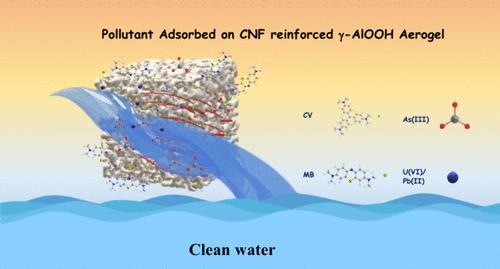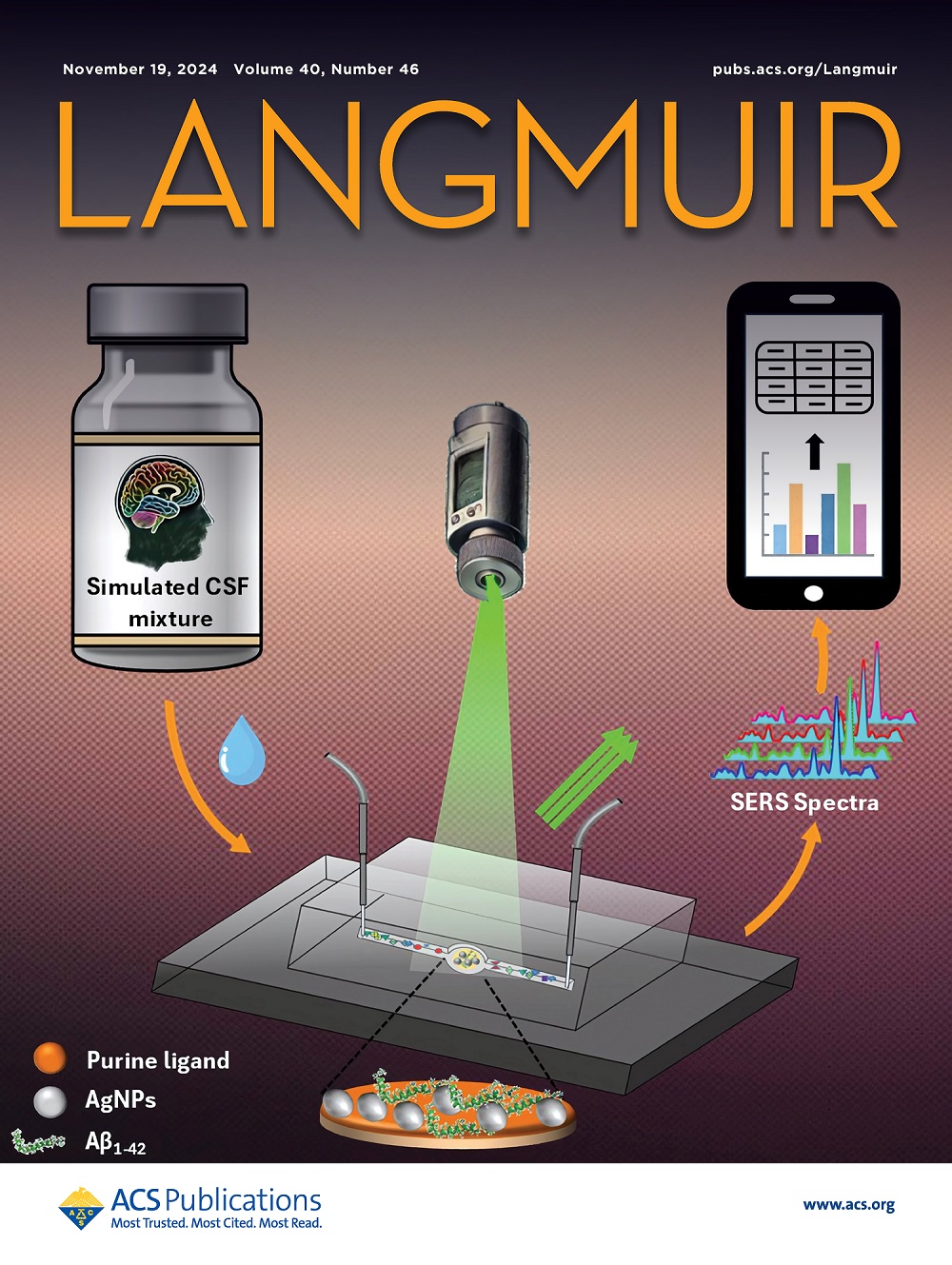Cellulose Nanofiber-Reinforced γ-AlOOH Aerogels for Enhanced Removal of Environmental Pollutants
IF 3.7
2区 化学
Q2 CHEMISTRY, MULTIDISCIPLINARY
引用次数: 0
Abstract
In this study, we report the modification of a monolithic γ-aluminum oxy-hydroxide (γ-AlOOH) aerogel with cellulose nanofibers (CNFs) using the sol–gel method via supercritical drying. The optimized 2% CNF (w/w) results in a monolithic CNF-γ-AlOOH that is amorphous in nature, along with C–C and C–O–C functional groups. Transmission electron microscopy (TEM) images of the as-synthesized CNF-γ-AlOOH showed CNF embedded in the γ-AlOOH aerogel. The adsorption capacities were determined using azo dyes: methylene blue (MB) and crystal violet (CV), and heavy metal ions: lead [Pb(II)], uranium [U(VI)], and arsenic [As(III)] as models for environmental pollutants. The maximum adsorption capacities were 210 mg/g for CV, 204 mg/g for MB, 105 mg/g for As(III), and 339 mg/g for U(VI) at a pH of 7, whereas Pb(II) exhibited a maximum adsorption capacity of 100 mg/g at pH 5. This is attributed to the synergistic interactions between the CNF hydroxyl groups and γ-AlOOH active sites, facilitating electrostatic and coordination interactions. The as-synthesized aerogels demonstrated high recyclability, retaining over 94% adsorption efficiency after five cycles and offering a sustainable approach to environmental remediation. These findings establish CNF-γ-AlOOH aerogels as robust, eco-friendly materials for water treatment applications, with potential scalability for addressing diverse environmental pollutants. Future research should explore their application in the removal of emerging contaminants and optimize their synthesis for household and industrial-scale implementation.

求助全文
约1分钟内获得全文
求助全文
来源期刊

Langmuir
化学-材料科学:综合
CiteScore
6.50
自引率
10.30%
发文量
1464
审稿时长
2.1 months
期刊介绍:
Langmuir is an interdisciplinary journal publishing articles in the following subject categories:
Colloids: surfactants and self-assembly, dispersions, emulsions, foams
Interfaces: adsorption, reactions, films, forces
Biological Interfaces: biocolloids, biomolecular and biomimetic materials
Materials: nano- and mesostructured materials, polymers, gels, liquid crystals
Electrochemistry: interfacial charge transfer, charge transport, electrocatalysis, electrokinetic phenomena, bioelectrochemistry
Devices and Applications: sensors, fluidics, patterning, catalysis, photonic crystals
However, when high-impact, original work is submitted that does not fit within the above categories, decisions to accept or decline such papers will be based on one criteria: What Would Irving Do?
Langmuir ranks #2 in citations out of 136 journals in the category of Physical Chemistry with 113,157 total citations. The journal received an Impact Factor of 4.384*.
This journal is also indexed in the categories of Materials Science (ranked #1) and Multidisciplinary Chemistry (ranked #5).
 求助内容:
求助内容: 应助结果提醒方式:
应助结果提醒方式:


